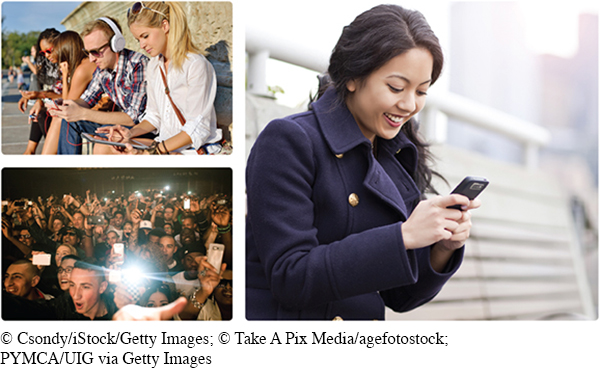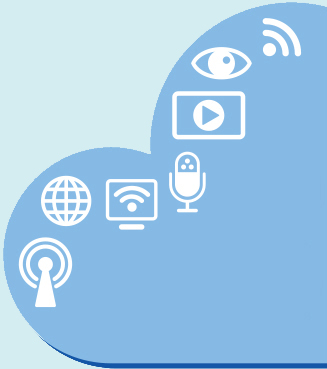Types of Mediated Communication
The phrase mediated communication may make you think about “the media”—that is, online news and entertainment sites, video games, television channels, movies, radio stations, newspapers, and magazines. These are examples of mass media: mediated communication vehicles that involve the sending of messages from content creators to huge, relatively anonymous audiences (Chaffee & Metzger, 2001). The content in such media is created for public consumption and is mostly one-
63
USING MEDIATED COMMUNICATION
Every text, tweet, post, video, pin, or note you send through mediated channels (whether personal, professional, or for fun) is as much of a communication choice as the words you use in a face-

Although mass media are an important area of research for communication scholars, this chapter focuses on social media, which enable communicators to directly send and receive messages in real time or across time intervals to manage their personal and professional relationships. At work, for instance, most interactions take place over e-

VLADGRIN/Shutterstock
MASS EXAMPLES New York Times National Public Radio Whitehouse.gov Fox News COMMUNICATION FLOW One- PURPOSE Information (news) Entertainment Advertising Public service FAMILIARITY WITH THE AUDIENCE Mostly unknown CONTENT CONTROL Source provider TYPE OF FEEDBACK Viewer ratings and comments, page view counts |

VLADGRIN/Shutterstock
SOCIAL EXAMPLES Text messaging COMMUNICATION FLOW Two- PURPOSE Information Self- Relationship building Managing work tasks Alleviating boredom FAMILIARITY WITH THE AUDIENCE Mostly known CONTENT CONTROL Senders and receivers TYPE OF FEEDBACK Immediate and/or delayed responses or replies |
VLADGRIN/Shutterstock